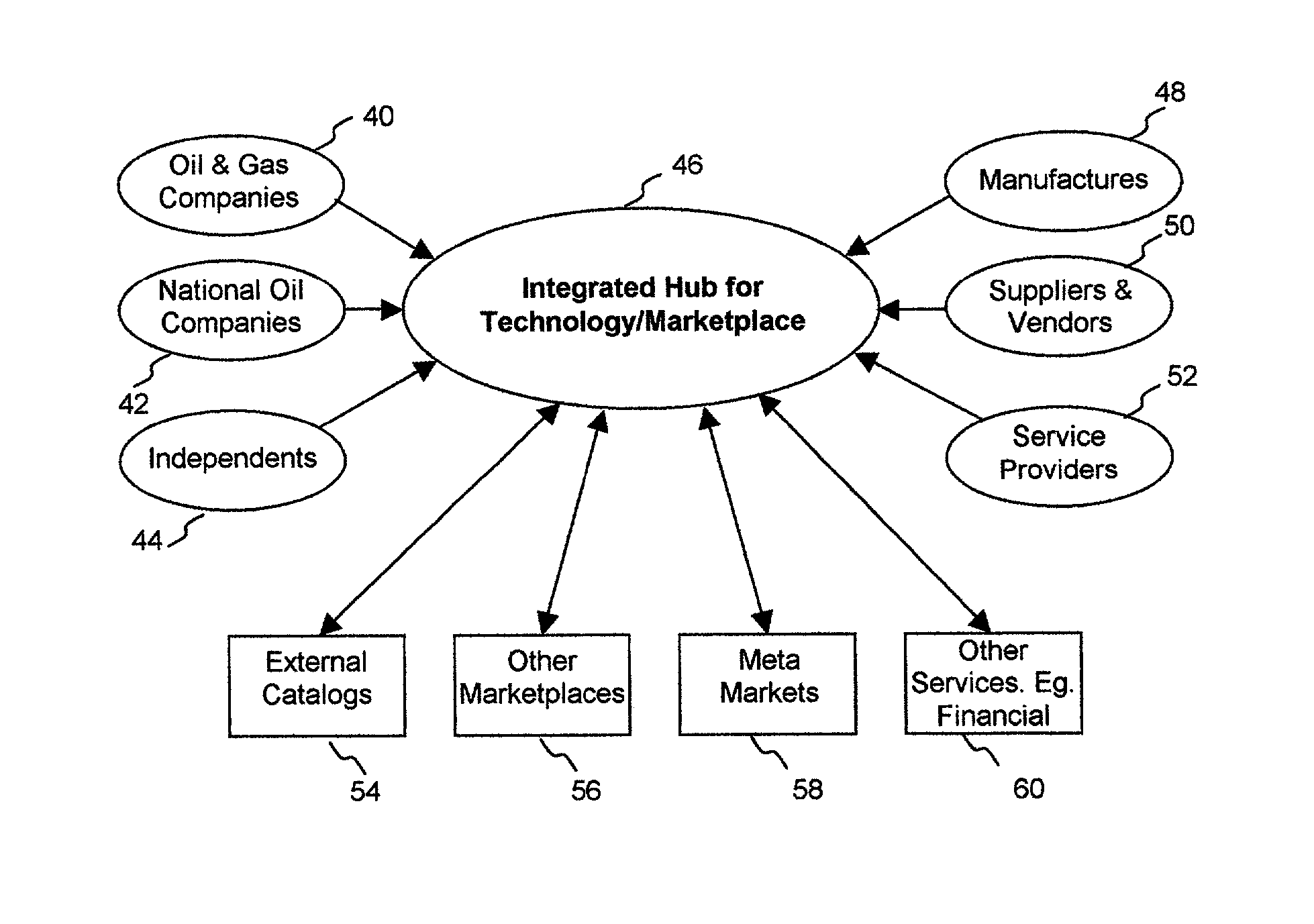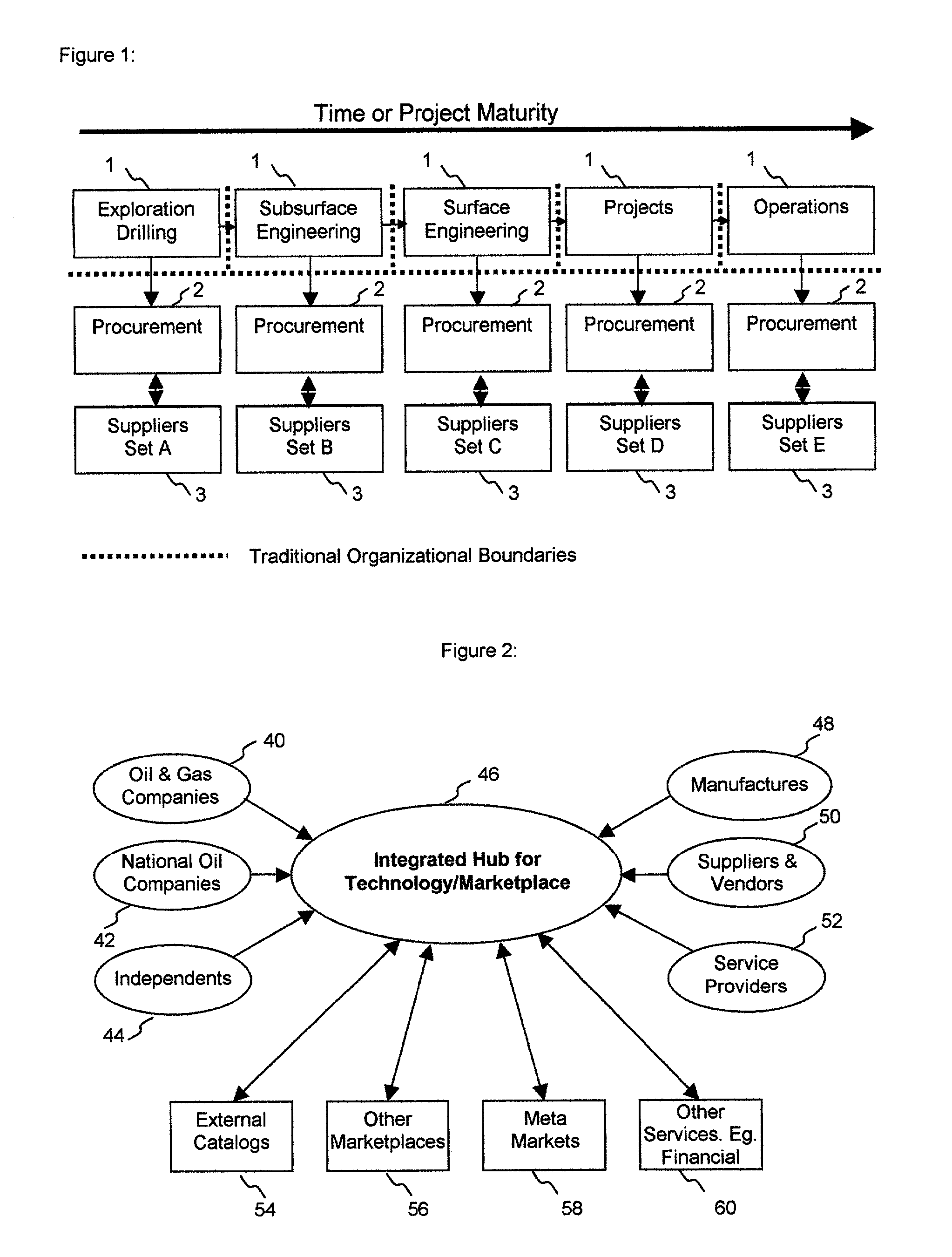Web-centric design and engineering technologies, integration methods and optimization of engineering-to-procurement business process supply chain
- Summary
- Abstract
- Description
- Claims
- Application Information
AI Technical Summary
Benefits of technology
Problems solved by technology
Method used
Image
Examples
Embodiment Construction
[0033] FIG. 1 is a block diagram of the existing sequential and disjointed engineering to procurement business process supply chain. Typically during the life cycle of an Upstream Petroleum industry oil and gas field project activities progress from Exploration 10 to Subsurface engineering 12 to Surface engineering 14 to Capital Projects 16 to Operations 18 before the field is abandoned. Each one of these activities is separated by an organizational boundary. Although there is interaction between these departments, they are not integrated. The work done in each unit is well defined and there is a specific hand off from one to the other. During each phase there is specific activity that needs procurement of capital goods, which are required for field activity. For example, Exploration 10 drilling will need the design and purchase of drilling equipment and services. This is in general interfaced through the drilling department, which in turn interfaces with the procurement function. S...
PUM
 Login to View More
Login to View More Abstract
Description
Claims
Application Information
 Login to View More
Login to View More - R&D Engineer
- R&D Manager
- IP Professional
- Industry Leading Data Capabilities
- Powerful AI technology
- Patent DNA Extraction
Browse by: Latest US Patents, China's latest patents, Technical Efficacy Thesaurus, Application Domain, Technology Topic, Popular Technical Reports.
© 2024 PatSnap. All rights reserved.Legal|Privacy policy|Modern Slavery Act Transparency Statement|Sitemap|About US| Contact US: help@patsnap.com










